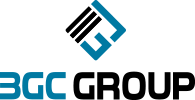How to Implement an ITSM Tool: A Strategic Approach
- Karl Aguilar
- Sep 11
- 2 min read

While traditional IT service management wisdom emphasizes that people and processes should precede technology, the reality is more nuanced. ITSM tool selection and implementation significantly influence an organization's journey toward operational maturity. The right tool doesn't just support your processes—it can accelerate your transformation.
The Business Case for ITSM Implementation
Organizations that implement ITSM tools strategically typically see measurable improvements:
Operational efficiency: Automated call logging reduces manual overhead and human error
Enhanced reliability: Systematic incident management minimizes service disruptions
Knowledge optimization: Centralized knowledge bases eliminate redundant problem-solving efforts
Stakeholder satisfaction: Both internal teams and end-users experience more consistent, responsive service
Strategic Considerations Before Tool Selection
Before evaluating specific platforms, establish a clear implementation charter. Your "why" must resonate across all organizational levels—from C-suite executives concerned with ROI to front-line technicians managing daily operations.
Modern ITSM platforms are enterprise-wide systems that touch multiple departments, influence external partnerships, and reshape how your organization delivers value. This scope demands thoughtful planning and stakeholder alignment.
Implementation Framework
1. Stakeholder Mapping and Engagement
Identify all parties affected by the new system—IT teams, help desk staff, end-users, management, and external vendors. Early engagement prevents resistance and ensures diverse perspectives inform your implementation strategy.
2. Total Cost of Ownership Analysis
Beyond licensing fees, factor in implementation services, process redesign, training programs, and change management initiatives. Organizations often underestimate these "soft costs," which can exceed the tool's purchase price.
3. Realistic Timeline Development
Implementation duration varies based on organizational complexity, feature scope, available resources, and external dependencies. Build buffer time for unforeseen challenges and stakeholder feedback cycles.
4. Compromise and Standardization
Enterprise tools prioritize consistency over departmental preferences. While individual teams may sacrifice some workflow flexibility, the organization gains unified reporting, streamlined processes, and improved collaboration.
5. Baseline Establishment and Success Metrics
Document current performance across key indicators: ticket resolution times, user satisfaction scores, system uptime, and operational costs. These baselines enable you to measure ROI and identify areas needing additional focus post-implementation.
Moving Forward
ITSM tool implementation represents a significant organizational investment with transformative potential. Success requires treating it as a business transformation project, not merely a technology deployment. Organizations that approach ITSM implementation strategically—often with guidance from experienced partners like 3GC—position themselves for sustainable operational excellence and competitive advantage.







Comments